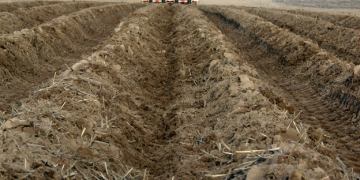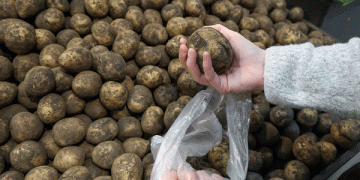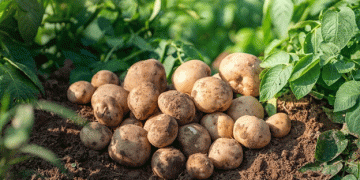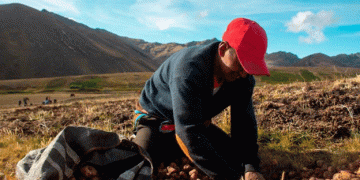May was a very cool, cloudy and wet month, which is having all kinds of repercussions now and into the summer for field crops. Gordon Johnson and Kate Everts talked about some of these vegetable field problems last week. Most of the problems are disease related, but some are horticultural. These weather conditions have led to some problems in high tunnel tomatoes.
In some high tunnels even though the tomato plants and tomato fruit look good with nice color, when the tomatoes are cut open, growers (or customers) find an internal whitening of the fruit (photo above). This malady is different from grey wall because there are blotches of hard white corky tissue instead of collapsed dark tissue (common in grey wall) in the outer wall of the fruit. In addition the corky white tissue is not confined to the outer wall of the fruit but is found throughout the interior walls. Tomatoes look good on the outside but bad on the inside. The cause is lower levels of potassium (K+) than what is needed by the fruit to ripen properly. Tissue tests should show K+ levels at 3-3.5% or greater to avoid any fruit ripening problems.
For the month of May we had very few sunny or even partly sunny days, most were overcast. In the past when we have had very overcast skies for extended periods of time we have seen internal whitening problems in high tunnel tomatoes. This may seem odd, but anything that interferes with the ability of the plant to take up K+ at the critical time of fruit enlargement will result in ripening problems, especially when there is a heavy fruit load on the plant, which there is in high tunnels in May and June. However, other tomato high tunnels have not seen this problem. I think one thing that may have diminished the problem this year is the fact that May temperatures were not very warm. These somewhat cooler temperatures, I think, slowed the growth of tomatoes when there was not much sunshine in the high tunnels, reducing the problems with K+ uptake.
The thing to do now is to be sure to be feeding K+ through the drip each time you fertigate. This placement of K+ in the upper layer of soil where tomato roots are concentrated is exactly where the plant needs it for quick uptake and utilization. Some growers also use a foliar spray of potassium after flowering to move more K+ into the plant. This does help some in reducing ripening problems, but cannot substitute for the large amounts of K+ that are needed at fruit loading.
— Jerry Brust, University of Maryland
Source: University of Delaware Cooperative Extension





